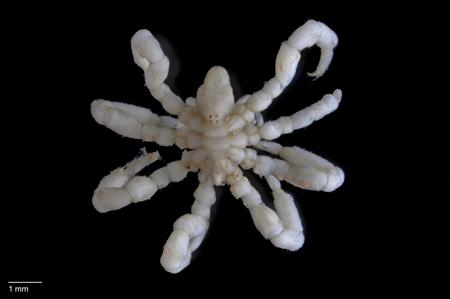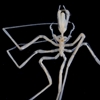Other Names
- Sea spider
General Description
Body with proboscis projecting outward from front, with the mouth at the tip. Central body (trunk) behind the proboscis, with a raised, rounded area (tubercle) bearing four eyes. Eight segmented walking legs attached to the sides of the trunk. Small abdomen behind trunk, unsegmented. Leg span about 5 mm.
Biology
This small sea spider breeds from January to April. There is a report of a larger female embracing a smaller egg-bearing male with their ventral surfaces facing one another, suggesting that they mate in this position. Its food preferences are unknown, however its robust appearance suggests that they are unlikely to be good climbers and could eat hydroids and seaweeds like other species do. Males carry the eggs, holding them between body parts called ovigers that hang under the animal.
Habitat
Little information known on habitat, intertidal and subtidal, to depth of 50 m.
Reefs
Distribution guide
Indo-Pacific waters including southern Australia.
Species Group
Depth
Shallow (1-30 m)
Deep ( > 30 m)
Water Column
Max Size
5 mm
Commercial Species
No
Global Dispersal
Recorded in Australia
Conservation Status
- DSE Advisory List : Not listed
- EPBC Act 1999 : Not listed
- IUCN Red List : Not listed





